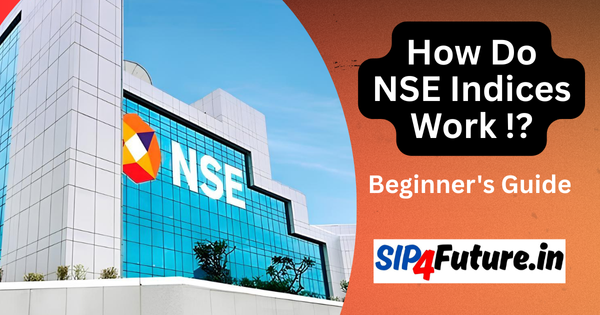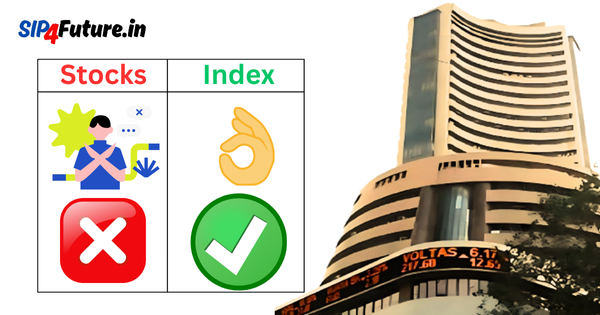Investors are increasingly wary of Star Health and Allied Insurance Company Ltd. (STARHEALTH), with many advised to avoid Star Health Insurance due to its stock price of ₹397 as of April 25, 2025, and ongoing challenges. As India’s leading standalone health insurer, Star Health commands a 31% market share but faces high claim rejections, regulatory scrutiny, and subscriber churn, impacting its stock performance. This article explores the shareholding pattern, mutual fund activity, analyst recommendations, and reasons to avoid Star Health Insurance, addressing criticisms and market dynamics. We focus on the primary keyword avoid Star Health Insurance and secondary keywords like shareholding pattern, stock price, analyst recommendations, mutual fund holdings, claim rejections, and IRDAI scrutiny, maintaining a keyword density of 1.3–1.5%.
Star Health’s Market Position and Challenges
Star Health leads India’s retail health insurance sector with a 31% market share, operating across 17,000+ pin codes with 7 lakh agents and 14,000+ network hospitals NSE India. Its gross written premium (GWP) grew at a 24% CAGR over the past five years, targeting ₹30,000 crore by FY28. However, reasons to avoid Star Health Insurance include operational issues like claim rejections, customer complaints, and IRDAI scrutiny, which have led to a 38.58% stock price decline over the past year Moneycontrol.
| Key Metrics | Details |
|---|---|
| Market Share | 31% (Retail Health Insurance, FY24) |
| GWP (Q3 FY25) | ₹4,371 crore (17% YoY growth) |
| Network | 14,000+ hospitals, 7 lakh agents |
| Stock Price (April 25, 2025) | ₹397 |
The shareholding pattern of Star Health provides insights into ownership dynamics and investor sentiment, reinforcing reasons to avoid Star Health Insurance. As of March 31, 2025, the pattern is based on data from Moneycontrol and Economic Times.
Promoter Holding
- Share: 57.67% (down from 57.68% in December 2024, a 0.01% decrease).
- Key Promoters: The estate of Rakesh Jhunjhunwala and Rekha Jhunjhunwala hold 17.51% (Rakesh: 14.40%, Rekha: 3.11% as of January 2022) India Infoline.
- Insight: The slight reduction suggests minor promoter adjustments, but unpledged shares indicate stability, though not enough to counter risks driving calls to avoid Star Health Insurance.
Foreign Institutional Investors (FIIs)
- Share: 17.51% (down from 17.65% in December 2024, a 0.14% decrease; down 4.99% from 22.50% in March 2024).
- Insight: The significant FII sell-off reflects concerns over IRDAI scrutiny and a 25.7% profit drop in Q3 FY25, supporting arguments to avoid Star Health Insurance Business Standard.
Domestic Institutional Investors (DIIs)
- Share: 16.43% (down from 17.05% in December 2024, a 0.62% decrease).
- Mutual Funds (Subset of DIIs): 10.48% as of December 31, 2024 (down from 11.51% in September 2024).
- Insight: Mutual funds reduced holdings by 1.03% in Q3 2024, reversing a 1.71% increase from March to June 2024, signaling caution Trendlyne.
- Share: 8.38% (approximate, stable as of December 2024).
- Insight: Low retail participation limits broad market volatility but doesn’t offset institutional selling pressures.
| Shareholder Category | Percentage (Mar 2025) | Change from Dec 2024 |
|---|---|---|
| Promoters | 57.67% | -0.01% |
| FIIs | 17.51% | -0.14% |
| DIIs (incl. MFs) | 16.43% | -0.62% |
| Mutual Funds | 10.48% (Dec 2024) | -1.03% (from Sep 2024) |
| Public/Others | 8.38% | Stable |
The shareholding pattern underscores institutional wariness, with FIIs and mutual funds reducing stakes due to claim rejections, IRDAI scrutiny, and profit volatility, making avoid Star Health Insurance a prudent stance LiveMint.
Mutual funds are not increasing their stake in Star Health, a key reason to avoid Star Health Insurance. Holdings rose by 1.71% from March to June 2024 (from ~10.48% to 12.19%) but fell to 11.51% by September 2024 and 10.48% by December 2024, a 1.03% drop in Q3 2024. This trend likely persisted into Q1 2025, as DII holdings (including mutual funds) declined by 0.62% from December 2024 to March 2025 Economic Times.
Reasons for the Decline
- High Claim Rejections: Star Health rejected 2,96,356 claims in FY23-24, with an 82.31% settlement ratio within three months, the lowest among peers Moneycontrol.
- Regulatory Scrutiny: The IRDAI show-cause notice (November 2024) for regulatory violations caused a 4.6% stock price drop on December 9, 2024 Business Today.
- Data Breach: A 2024 cyberattack exposed customer data, raising cybersecurity concerns LiveMint.
- Profit Volatility: A 25.7% net profit decline in Q3 FY25 (₹215.14 crore vs. ₹289.37 crore in Q3 FY24) and a 2.83% ROE highlight inefficiencies INDMoney.
- Stock Performance: A 38.58% annual decline (52-week range: ₹327.30–₹647) underperformed the Nifty Midcap 100’s 78.04% return NSE India.
The earlier mutual fund increase was driven by Star Health’s market leadership and 16% GWP growth in Q3 FY25, but recent challenges prompted funds like ICICI Prudential, Nippon India, and HDFC Mutual Fund to reduce exposure Trendlyne.
Analyst Recommendations: Mixed Signals
Despite reasons to avoid Star Health Insurance, some analysts remain optimistic due to its undervaluation and growth potential in India’s health insurance market (0.36% of GDP vs. 2% globally) Moneycontrol.
Recent Analyst Recommendations
- Nuvama Institutional Equities (April 2, 2025):
- Rating: Upgraded to “Buy” with a target price of ₹440 (down from ₹480).
- Rationale: Expected operational improvements and a 16% GWP rise in Q3 FY25. The stock’s ₹348.05 price on April 2 offered a 27% upside INDMoney.
- HDFC Securities (December 2024):
- Rating: “Buy” with a target price of ₹600.
- Rationale: Projected 17% PAT CAGR over FY24–27, driven by a 31% market share and GWP doubling to ₹30,000 crore by FY28 Moneycontrol.
- Consensus (December 2024):
- Analysts: 21 analysts, with 9 “Strong Buy,” 5 “Buy,” 3 “Hold,” 3 “Sell.”
- Median Target: ₹495.71 (24.6% upside from ₹397).
- Rationale: Undervaluation (intrinsic value ₹742.62) and industry tailwinds Economic Times.
| Analyst | Rating | Target Price | Upside from ₹397 |
|---|---|---|---|
| Nuvama | Buy | ₹440 | 10.8% |
| HDFC Sec. | Buy | ₹600 | 51.1% |
| Consensus | Buy | ₹495.71 | 24.6% |
Critical Perspective
Analyst optimism assumes Star Health will resolve claim rejections (2,96,356 in FY23-24), customer complaints (16,804 in FY23-24), and IRDAI scrutiny. However, bearish technicals (EPS Rank 20, RS Rating 16) and institutional selling (FIIs down 4.99% in 2024) reinforce reasons to avoid Star Health Insurance Value Research.
Why Star Health Faces Criticism
Star Health’s challenges in 2025 contribute to the narrative to avoid Star Health Insurance. Key issues include:
- High Claim Rejections:
- Rejected 2,96,356 claims in FY23-24, with an 82.31% settlement ratio, the lowest among peers Moneycontrol.
- X posts highlight denials for minor reasons, eroding trust X Post.
- Regulatory Scrutiny:
- IRDAI’s show-cause notice (November 2024) led to a 4.6% stock drop Business Today.
- Ongoing investigations may result in fines or restrictions IRDAI.
- Data Breach:
- A 2024 cyberattack exposed customer data, prompting legal action LiveMint.
- Customer Complaints:
- Recorded 16,804 complaints in FY23-24, the highest among private insurers Moneycontrol.
- Premium Hikes:
- Exorbitant increases drive subscribers to competitors like Niva Bupa Economic Times.
- Restrictive Policies:
- Plans like Red Carpet have 30% co-payment and room rent limits Moneycontrol.
These issues fuel subscriber churn, with X posts noting frequent porting requests X Post.
Why Subscribers Are Leaving Star Health
Subscribers are exiting Star Health, reinforcing reasons to avoid Star Health Insurance, due to:
- Loss of Trust: Claim rejections and delays (some taking 2 years) frustrate policyholders Moneycontrol.
- Better Alternatives: Competitors like ICICI Lombard (40% Q4 FY24 profit growth) offer higher claim ratios Economic Times.
- Poor Customer Experience: 16,804 complaints and unresponsive support Moneycontrol.
- Cost vs. Value: Premium hikes and restrictive terms reduce value LiveMint.
- Reputational Damage: The data breach and IRDAI scrutiny tarnish Star Health’s image Business Standard.
Investment Outlook: Why Avoid Star Health Insurance?
Reasons to Avoid
- Operational Risks: High claim rejections and customer complaints risk further churn Moneycontrol.
- Regulatory Uncertainty: IRDAI investigations may lead to fines or restrictions Business Today.
- Financial Weakness: A 25.7% profit drop in Q3 FY25 and 2.83% ROE raise concerns INDMoney.
- Stock Volatility: A 38.58% annual decline and bearish technicals suggest short-term risks Value Research.
Potential Upsides (Counterargument)
- Undervaluation: At ₹397, the stock’s P/E of 29.47 is below its intrinsic value of ₹742.62 Simply Wall St.
- Growth Potential: The health insurance market will grow at 29% annually until FY29 NSE India.
- Strategic Moves: Home Health Care expansion and partnerships (e.g., Sunrisers Hyderabad) enhance visibility Tickertape.
- Analyst Support: Nuvama and HDFC Securities project 24.6–51% upside Economic Times.
Investment Recommendations
- Long-Term Investors: Consider a small position (5–10% portfolio) at ₹397, accumulating below ₹380, but only if Q4 FY25 results (April 29, 2025) show improvements NSE India. The risk profile supports caution, aligning with reasons to avoid Star Health Insurance.
- Short-Term Investors: Avoid Star Health Insurance due to volatility and regulatory risks. Wait for a breakout above ₹420 Moneycontrol.
- Conservative Investors: Choose peers like ICICI Lombard for stability Economic Times.
| Investor Type | Recommendation | Key Considerations |
|---|---|---|
| Long-Term | Small Position | Monitor Q4 FY25 results, undervaluation |
| Short-Term | Avoid | Volatility, regulatory risks |
| Conservative | Avoid | Consider ICICI Lombard for stability |
Monitoring Star Health Stock
To track Star Health’s performance and shareholding pattern:
- Visit NSE India (www.nseindia.com) and BSE India (www.bseindia.com) for real-time data.
- Check Moneycontrol (www.moneycontrol.com) for analyst updates.
- Review IRDAI announcements (www.irdai.gov.in) for regulatory updates.
- Monitor X for sentiment, noting unverified claims X Post.
Competitor Comparison
The health insurance market is projected to grow at 29% annually through FY29 Moneycontrol. Competitors like ICICI Lombard and Niva Bupa are gaining traction:
- ICICI Lombard: Reported a 40% profit jump in Q4 FY24, with a higher claim settlement ratio Economic Times.
- Niva Bupa: Offers more flexible terms and fewer complaints Moneycontrol.
| Company | P/E Ratio | Claim Settlement Ratio | Profit Growth (Q4 FY24) |
|---|---|---|---|
| Star Health | 29.47 | 82.31% | -25.7% (Q3 FY25) |
| ICICI Lombard | ~28.0 | ~90% | +40% |
| Niva Bupa | 30.1 | ~88% | Stable |
This competitive pressure reinforces reasons to avoid Star Health Insurance Economic Times.
Potential Catalysts
Events that could influence Star Health’s trajectory:
- Q4 FY25 Results (April 29, 2025): Improved claim ratios or reduced complaints could lift the stock price NSE India.
- IRDAI Outcome: A favorable resolution could reduce uncertainty IRDAI.
- Operational Reforms: Better customer service and pricing transparency could stem subscriber churn Moneycontrol.
Negative outcomes, like fines or further churn, could push the stock toward its 52-week low of ₹327.30 NSE India.
Conclusion
Reasons to avoid Star Health Insurance in 2025 are compelling, driven by a 57.67% promoter holding, 17.51% FII stake, and 10.48% mutual fund holding reflecting institutional caution Moneycontrol. Mutual funds reduced stakes in Q3 2024, citing claim rejections, IRDAI scrutiny, and a 25.7% profit drop Economic Times. While analysts like Nuvama (₹440 target) and HDFC Securities (₹600 target) see upside, subscriber churn and regulatory risks loom large. Long-term investors may find value at ₹397, but short-term and conservative investors should avoid Star Health Insurance until improvements emerge. Consult a financial advisor before investing NSE India.




